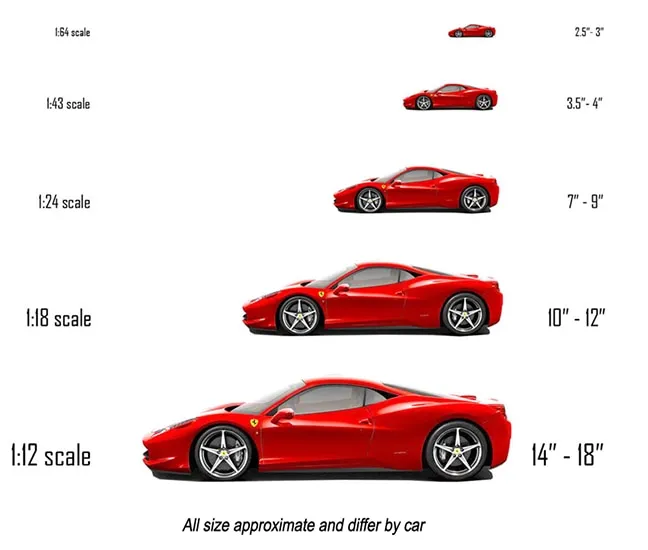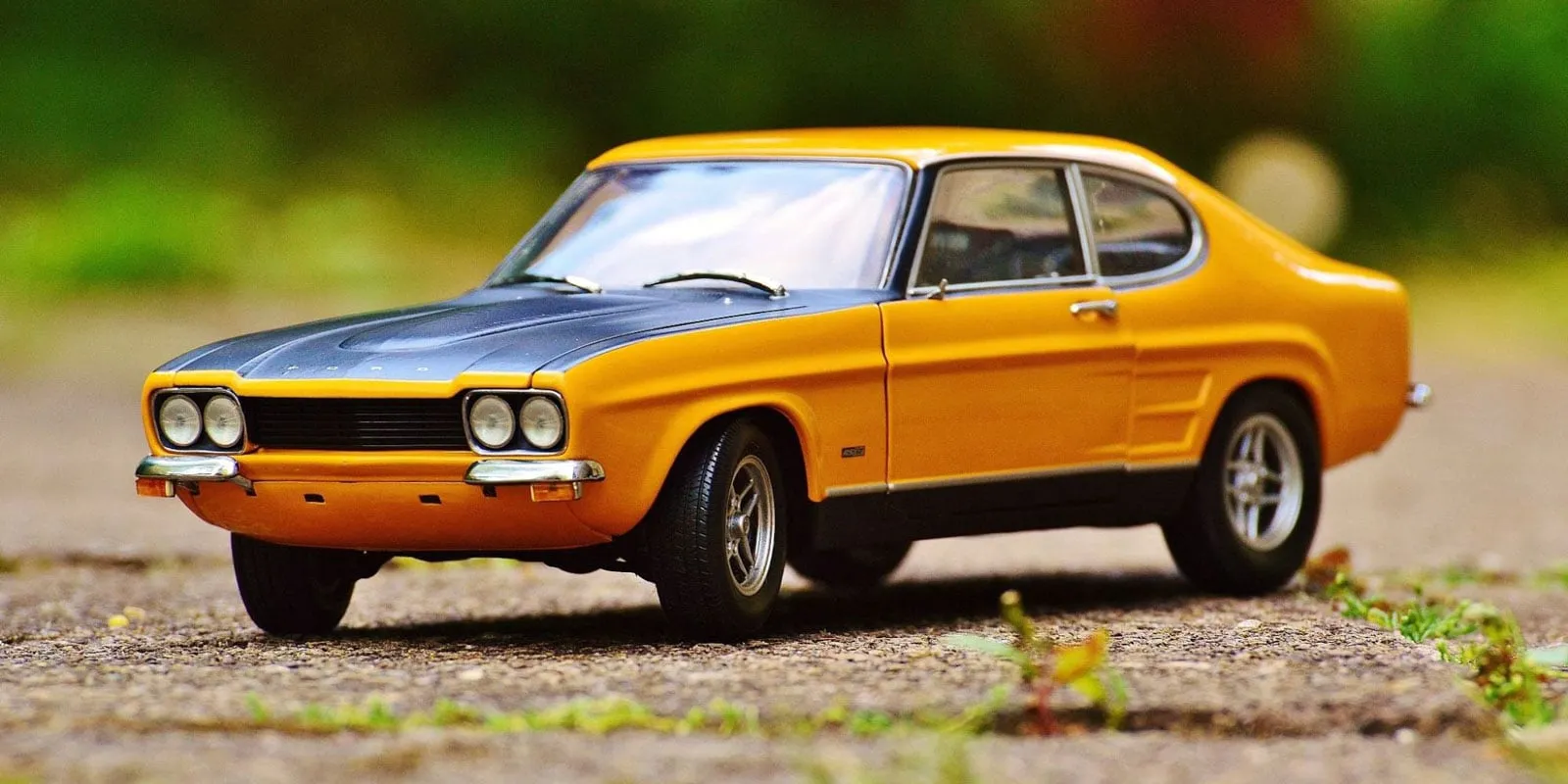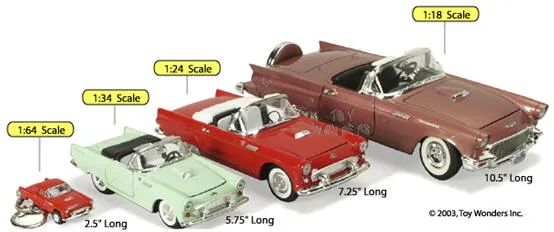Diecast Scale Chart Top 7 Facts!
The world of diecast cars is a fascinating hobby, drawing enthusiasts of all ages. But if you’re new to the scene, navigating the various scales can seem daunting. Understanding the diecast scale chart is crucial for any collector. This guide unveils the top 7 facts, equipping you with the knowledge to appreciate and expand your collection. From the fundamental concept of scale to the most popular sizes, we’ll explore everything you need to know to become a savvy diecast car aficionado. Get ready to dive in and unlock the secrets of the diecast scale chart!
What is a Diecast Scale Chart
At its core, a diecast scale chart is a system that represents the ratio between the size of a miniature diecast car and its real-life counterpart. This ratio is expressed as a fraction. For instance, a 1:18 scale car means the diecast model is 1/18th the size of the actual vehicle. This standardized system allows manufacturers to create models of varying sizes while maintaining proportional accuracy. The scale chart helps collectors understand the relative size of different models, enabling them to build diverse and visually appealing collections. It ensures that a model car is a scaled-down version of the real car, preserving its design.
Why is the Scale Chart Important for Collectors

For collectors, the diecast scale chart is indispensable. It dictates the size of the models, influencing display options and storage needs. Choosing a scale often depends on personal preferences, available space, and the desired level of detail. Different scales offer varying degrees of intricacy, affecting price and collectibility. A comprehensive understanding of the scale chart enables collectors to make informed decisions when purchasing and displaying models. A well-curated collection using a consistent scale, or a few complementary scales, often looks more impressive than a random assortment. Also, the scale affects the level of detail; larger scales usually offer more intricate features.
The Most Common Diecast Scales
Several scales dominate the diecast car world, each with its own appeal. These scales cater to different collecting preferences and display needs. Each scale offers a unique balance of detail, size, and affordability. The most popular scales are the following, and these scales are the workhorses of the diecast world, providing variety and allowing for specialization. Understanding these will get you started and point you in the right direction as you build your collection.
1 64 Scale Diecast Cars
One of the most popular scales, 1:64, is known for its affordability and accessibility. These models are relatively small, making them ideal for starting a collection or displaying a large number of cars. They are also very common, with brands like Hot Wheels and Matchbox dominating this scale. Their compact size means they fit easily on shelves, desks, or in display cases. This scale is an excellent choice for collectors who want to amass a wide variety of models without taking up too much space.
1 43 Scale Diecast Cars

1:43 scale offers a step up in detail and size from 1:64. These models provide a better balance between detail and display space, making them a favorite among serious collectors. This scale often features more intricate details, such as opening doors, detailed interiors, and realistic paint finishes. They’re perfect for those who appreciate finer details without committing to the larger size of 1:18 scale models. This scale allows for a comprehensive collection that is still manageable.
1 18 Scale Diecast Cars
The 1:18 scale is the largest and often most detailed scale commonly available. These models are known for their impressive size and intricate detailing, including opening doors, hoods, trunks, and detailed engine compartments. This scale is preferred by collectors who prioritize realism and visual impact. While they require more display space and are generally more expensive, the level of detail and realism in 1:18 scale models is unmatched. This scale allows for incredibly realistic representations of the cars being modeled.
Other Diecast Car Scales You Should Know
Beyond the most common scales, other sizes cater to specific interests or needs. These scales provide additional choices for collectors seeking diversity or those who want a specific niche. These variations offer unique collecting opportunities and cater to specialized interests. Other scales enhance the variety of the hobby and create opportunities to collect in unusual sizes and with specific purposes in mind.
Factors That Influence Diecast Scale

Several factors can influence the choice of diecast scale. Display space is a critical consideration. Larger scales require more room, impacting display options. The level of detail is another factor; larger scales generally offer more intricate features. Budget also plays a role, as larger, more detailed models tend to be more expensive. Collecting focus is important too; collectors specializing in certain car types or eras might favor specific scales. Understanding these factors will help you make informed decisions when building your collection, ensuring you choose scales that align with your preferences and resources.
Tips for Choosing Diecast Scale
Selecting the right diecast scale is a personal journey. Consider your available space, budget, and collecting goals. Start by evaluating your display area and determining how much space you can dedicate to your collection. Set a realistic budget, as larger scales and more detailed models often come with a higher price tag. Identify your collecting focus. Research the scales commonly used for the types of cars you are interested in. Visit hobby shops or online forums to see examples of different scales and get inspiration. Ultimately, the best scale is the one that brings you the most joy and allows you to build a collection you are proud of. Consider the overall look and feel you wish to achieve with your collection.
Where to Find Diecast Scale Charts
Diecast scale charts are readily available online and in various hobby publications. Online resources include dedicated diecast car websites, forums, and manufacturer websites. You can find scale charts on specialized collecting websites. Many diecast car manufacturers provide scale charts on their websites. Hobby shops often have printed charts or knowledgeable staff to assist you. These resources ensure you can easily determine the scale of any model and expand your knowledge of the diecast world. Use these tools to enhance your collecting experience!
In conclusion, understanding the diecast scale chart is essential for any diecast car enthusiast. From the basics of scale ratios to the nuances of different sizes, this guide has equipped you with valuable insights. Knowing the scales empowers you to make informed collecting decisions, enhance your display, and appreciate the intricate details of these miniature vehicles. Whether you’re a beginner or a seasoned collector, mastering the diecast scale chart will enrich your hobby, allowing you to fully enjoy the world of diecast cars. Happy collecting!
